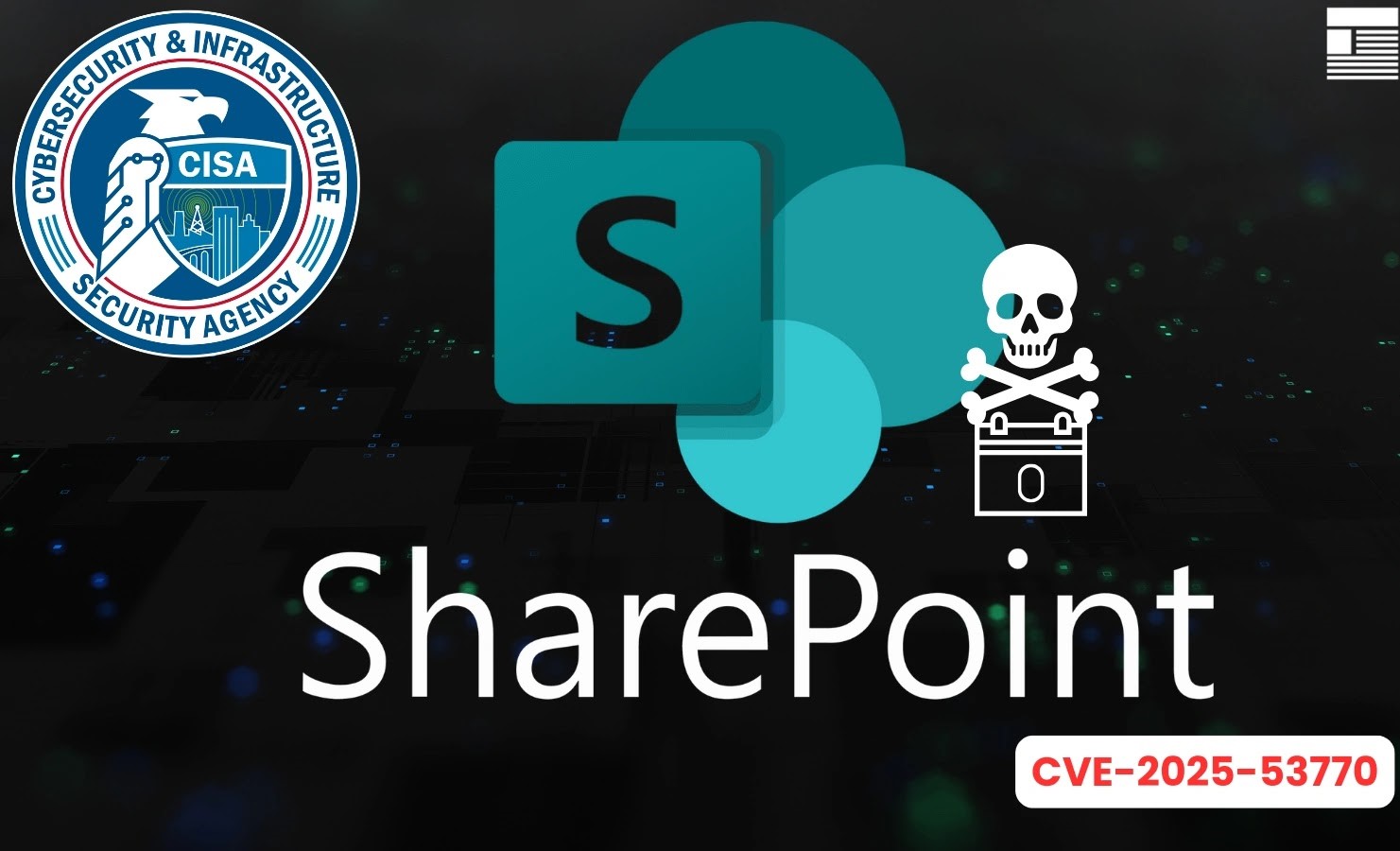
CISA Warns of Microsoft SharePoint Server 0-Day RCE Vulnerability Exploited in Wild
Urgent Alert: CISA Warns of Exploited SharePoint Server 0-Day RCE Vulnerability
Organizations worldwide face an immediate and severe threat: a critical zero-day remote code execution (RCE) vulnerability actively being exploited in Microsoft SharePoint Server on-premises installations. CISA (Cybersecurity and Infrastructure Security Agency) has issued an urgent warning, underscoring the gravity of this flaw and its potential for widespread compromise. This vulnerability, designated CVE-2025-53770, demands immediate attention from all entities leveraging SharePoint Server.
Understanding CVE-2025-53770: A Zero-Day RCE Exploit
The vulnerability CVE-2025-53770 is a zero-day RCE flaw, meaning it was unknown to the vendor (Microsoft) and typically without a public patch when initial exploitation was discovered. Remote Code Execution vulnerabilities are among the most dangerous as they allow an attacker to execute arbitrary malicious code on a vulnerable system from a remote location, often leading to full system compromise, data exfiltration, or the deployment of ransomware. The fact that threat actors are actively exploiting this in the wild escalates the risk significantly, indicating a sophisticated or widespread attack campaign may be underway.
Microsoft SharePoint Server, a widely adopted collaboration and document management platform, often holds vast amounts of sensitive organizational data. A successful RCE exploit could grant attackers complete control over the SharePoint server, providing a critical pivot point into an organization’s internal network.
Impact and Scope of the Threat
The immediate impact of CVE-2025-53770 is profound for any organization utilizing on-premises versions of Microsoft SharePoint Server. Potential consequences include:
- Full System Compromise: Attackers can gain administrative control over the SharePoint server.
- Data Breach: Access to sensitive documents, user credentials, and intellectual property stored within SharePoint.
- Lateral Movement: Exploited SharePoint servers can serve as a bridgehead for attackers to move deeper into an organization’s network, compromising other critical systems.
- Service Disruption/Ransomware: The ability to deploy malware, including ransomware, leading to operational disruption and significant financial loss.
- Reputational Damage: Significant harm to an organization’s reputation due to a security incident.
CISA’s warning to federal agencies to take immediate action highlights the national security implications and the widespread potential for compromise across critical infrastructure and government networks.
Remediation Actions and Mitigations
Given the active exploitation of CVE-2025-53770, immediate action is paramount. While a patch from Microsoft is anticipated, organizations must implement interim protections and robust monitoring strategies.
- Monitor Microsoft Security Advisories: Remain vigilant for an official patch or detailed mitigation guidance from Microsoft. Apply any available patches immediately upon release.
- Isolate SharePoint Servers (If Possible): If business operations allow, consider temporarily isolating SharePoint Server instances from broader network access until a patch is applied.
- Network Segmentation: Ensure SharePoint servers are properly segmented from other critical internal systems to limit potential lateral movement.
- Implement Least Privilege: Review and enforce the principle of least privilege for SharePoint user accounts and service accounts.
- Strengthen Authentication: Ensure multi-factor authentication (MFA) is enforced for all administrative access to SharePoint and related systems.
- Intrusion Detection/Prevention Systems (IDPS): Deploy sophisticated IDPS solutions to monitor for suspicious activity, known exploit patterns, and unauthorized access attempts targeting SharePoint.
- Regular Backups: Maintain up-to-date, offline backups of SharePoint data and configurations to ensure recovery capabilities in case of compromise.
- Incident Response Plan: Be prepared to activate your incident response plan. Conduct tabletop exercises simulating a SharePoint compromise scenario.
- Vulnerability Scanning: Regularly scan your external and internal assets for vulnerabilities, prioritizing SharePoint servers.
Tools for Detection and Mitigation
Effective defense against vulnerabilities like CVE-2025-53770 requires a combination of robust security tools and processes. Here are some relevant tools that can aid in detection, scanning, and mitigation:
| Tool Name | Purpose | Link |
|---|---|---|
| Nessus | Vulnerability Scanning and Management | https://www.tenable.com/products/nessus |
| OpenVAS | Open Source Vulnerability Scanner | https://www.greenbone.net/en/community-edition/ |
| Microsoft Defender for Endpoint | Endpoint Detection and Response (EDR), Antivirus | https://www.microsoft.com/en-us/security/business/microsoft-365-defender |
| Snort/Suricata | Network Intrusion Detection/Prevention Systems (NIDS/NIPS) | https://www.snort.org/ or https://suricata.io/ |
| Wireshark | Network Protocol Analyzer (for forensic analysis) | https://www.wireshark.org/ |
Preparedness: The Critical Imperative
The CISA warning regarding CVE-2025-53770 underscores a fundamental principle of cybersecurity: proactive defense and swift response are non-negotiable. Organizations must not only apply patches promptly but also maintain continuous vigilance over their IT environments. This incident serves as a stark reminder that even widely used, enterprise-grade software can harbor critical zero-day vulnerabilities exploited by malicious actors. Prioritizing robust security postures, maintaining an incident response muscle, and fostering a culture of cybersecurity awareness are crucial to navigating the evolving threat landscape.





